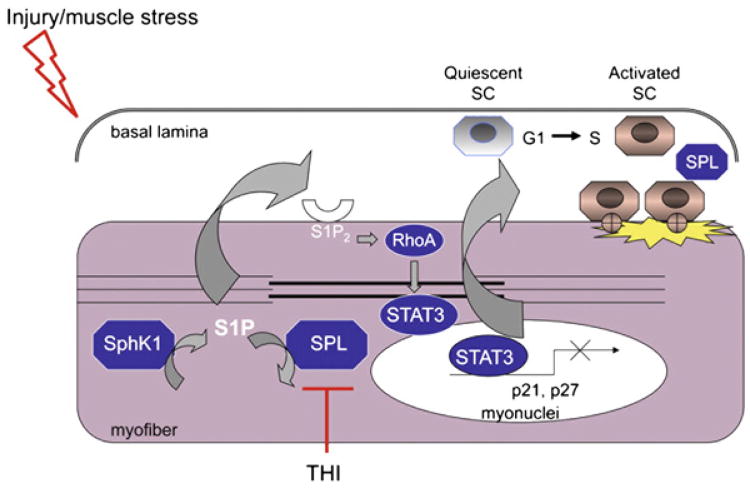Fig. 6.
Role of S1P in response to skeletal muscle repair. After skeletal muscle injury, SphK1 generates S1P, which activates S1PR2, leading to RhoA and STAT3 activation, thereby repressing small cell cycle inhibitor proteins. SCs reenter the cell cycle and contribute to muscle regeneration. Inhibition of SPL using THI leads to a boost in S1P signaling, thereby promoting SC activation and efficient muscle regeneration. Note that the localization of SPL is assigned to the myofiber for convenience. However, SPL in SCs and inflammatory cells may also regulate S1P levels in and around the injured muscle.

